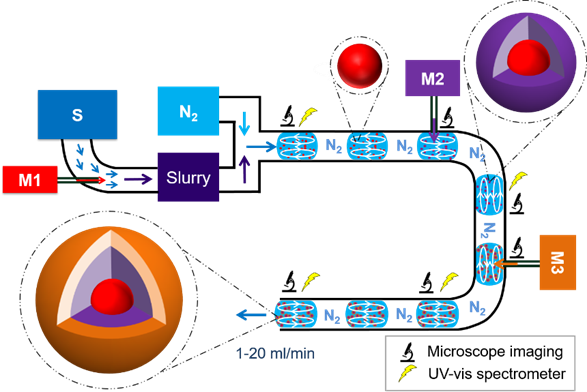Engineering and physical science
Microparticles for Battery Cathodes
Slug-flow reactor manufacturing of cathode materials
Society has become overwhelmingly dependent on lithium-ion battery-powered electronic devices: from cell phones and laptops to electric cars. However, to meet the growing demand issues in safety, battery life, charge capacity, and cost must be overcome. In order to address these challenges, more efficient manufacturing of complex active cathode materials such as nickel-cobalt-manganese oxide (NCM) is required. Current reactor types (e.g. co-precipitation manufacturing in batch-mode) are limited in their ability to produce quality and uniform microparticles, suffer intrinsic batch-to-batch variability, and require microparticle post-synthesis processing that may risk quality and overall efficiency. Despite recent advancements in continuous mode stirred tanks and vortex flow reactors on particle uniformity, the issue remains unresolved.
The technology
Researchers at VCU have developed an innovative slug flow manufacturing process to directly produce well-controlled microparticles with advanced battery performance and accelerated scale-up (Figure 1). On a microscopic level in a slug-flow reactor, each particle experiences the same environment with spatially uniform reaction conditions throughout the nucleation-growth process. This leads to uniform particles with controlled composition and properties and prevents batch-to-batch variation. This leads to uniform particles with controlled composition and properties. Additionally, the manufacturing set-up and conditions can remain the same while allowing convenient tuning of the production for scaling up or down. This approach has the potential to manufacture controllable cathode materials for use in electronic devices using batteries with better safety, higher quality, and at a reduced cost.

Figure 1. Modular slug-flow process for controllable synthesis of cathode microparticles.
